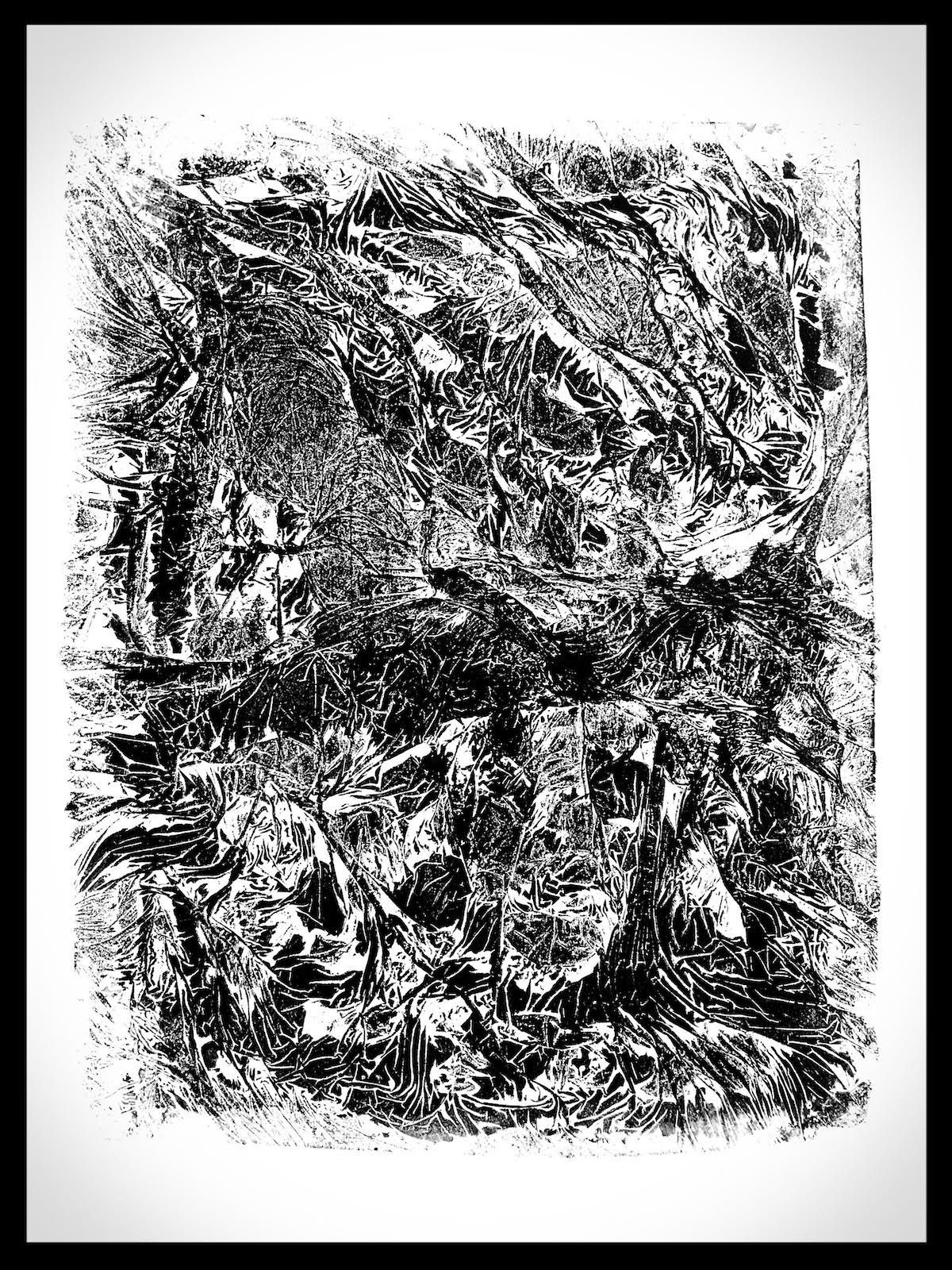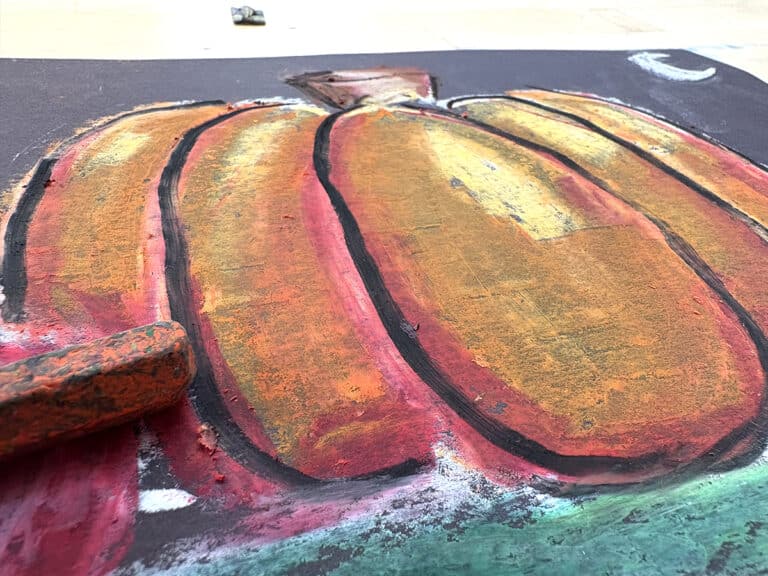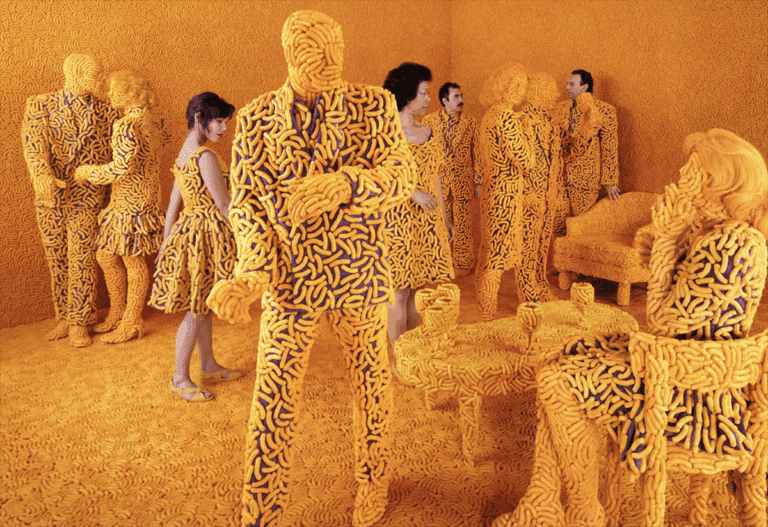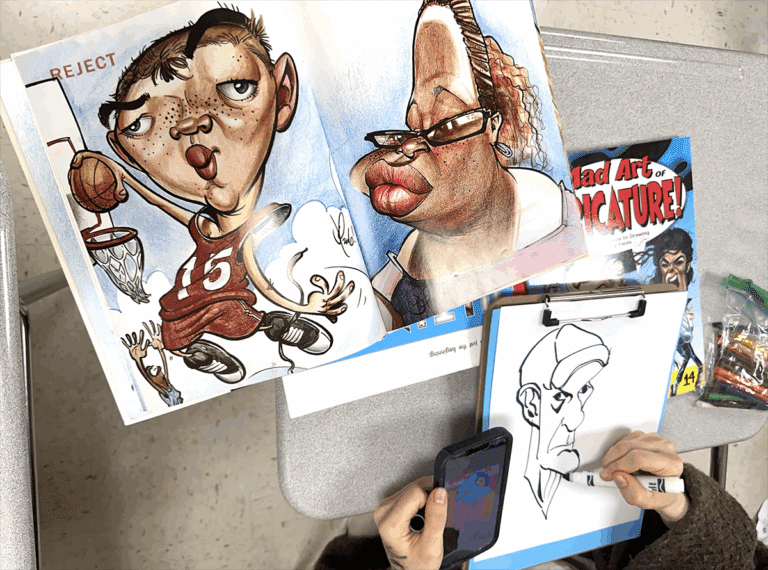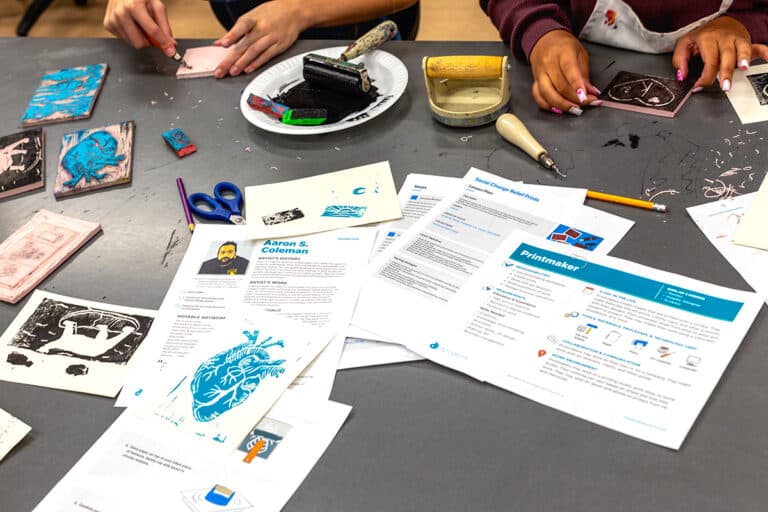One of the best things about being a teacher is that you get to learn right alongside your students. And even though we’re all busy, it’s important to take the time to stop and reflect. Today I’d love to share some of the amazing things I recently learned from my AOE students.
I just finished up teaching AOE’s Studio: Printmaking course, and I can’t tell you how much I enjoyed it. I worked with fourteen fabulous art educators from around the globe. I had students from New York and Oregon to Australia and Saudi Arabia! These were some of the most creative and passionate art educators I have ever met. As I looked through their work each week, I knew I couldn’t keep it all to myself.
So today, we’re diving into some of the amazing work that came out of this course. Enjoy!
Here are 8 Amazing Printmaking Ideas for All Grade Levels
1. Monoprint Collages
This idea comes from Brooke Date, a K-8 visual art teacher at Beverly Cleary School in Portland, Oregon.
To create the work below, Brooke first created a set of monoprints. Once they were dry, she cut them up and created a collage.

Brooke had this to say about her course experience.
“I loved the AOE Printmaking course because it introduced me to new printmaking techniques such as tabletop printing. It also inspired me to experiment with familiar printmaking methods in new, innovative ways. And, it allowed me to practice and create! In the rush of the school year, creating our own art can easily be put on the back burner. This course gave me ‘permission’ to take that time by providing a framework to do so.”
2. Linoleum Reduction Printing
Sue Girak, the visual arts specialist at City Beach Primary School in Perth, Western Australia, teaches children in grades 1-6. In the course, Sue created a reduction lino print. You can see her wonderful results below.
Creating a reduction print in the classroom and printing it in various iterations, as Sue did, would be a great way to push your students’ problem-solving skills to the next level.
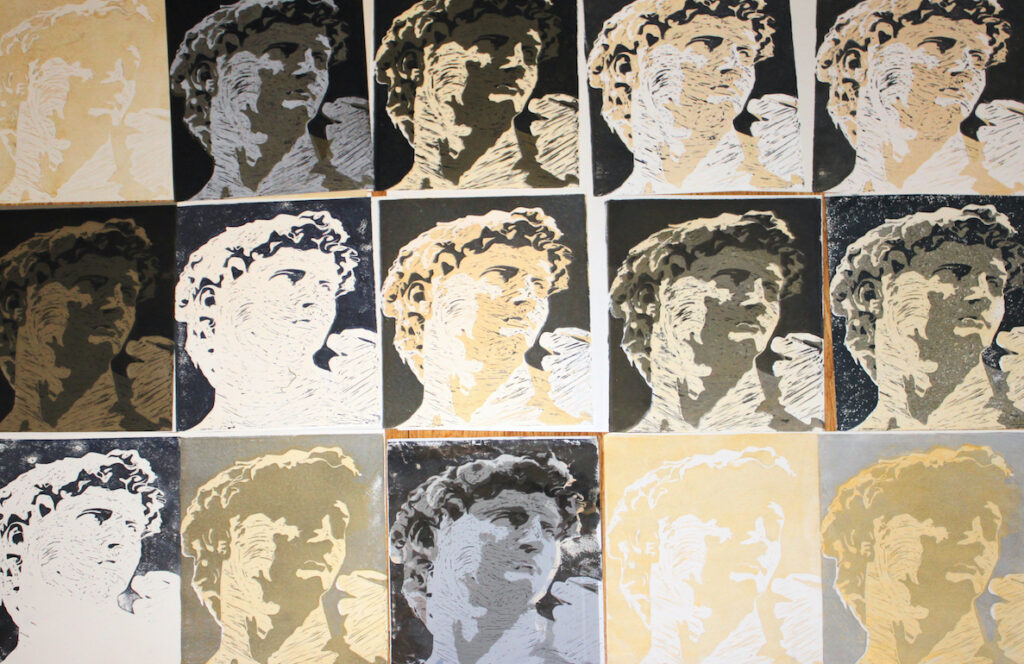
Aside from her excitement about bringing Gelli® printing and reduction prints into her classroom, Sue also loved getting to connect with other art teachers. She told me, “The most valuable thing I gained from the AOE Studio: Printmaking course was a supportive network of dedicated art teachers. I completed part of my BA degree online. On a couple of occasions, I withdrew from units because I felt quite isolated and was not sure if I was even on the right track. On the other hand, our group, which included a mix of novice and expert printmakers, provided such constructive feedback that I felt encouraged to go beyond the minimum requirements of the course.”
3. Monoprint Tabletop Printing and Linocut
Hillary Lewis teaches visual art to grades 6-8 at East Ridge Middle School in Ridgefield, Connecticut. Below, you can see how she combined two printmaking processes into one amazing result. First, she created a monoprint by using the tabletop as a plate! Once the first layer was dry, she printed a linocut on top.
You could hit so many art concepts with this single lesson including different printing processes, abstract vs. realistic art, color theory, and more!
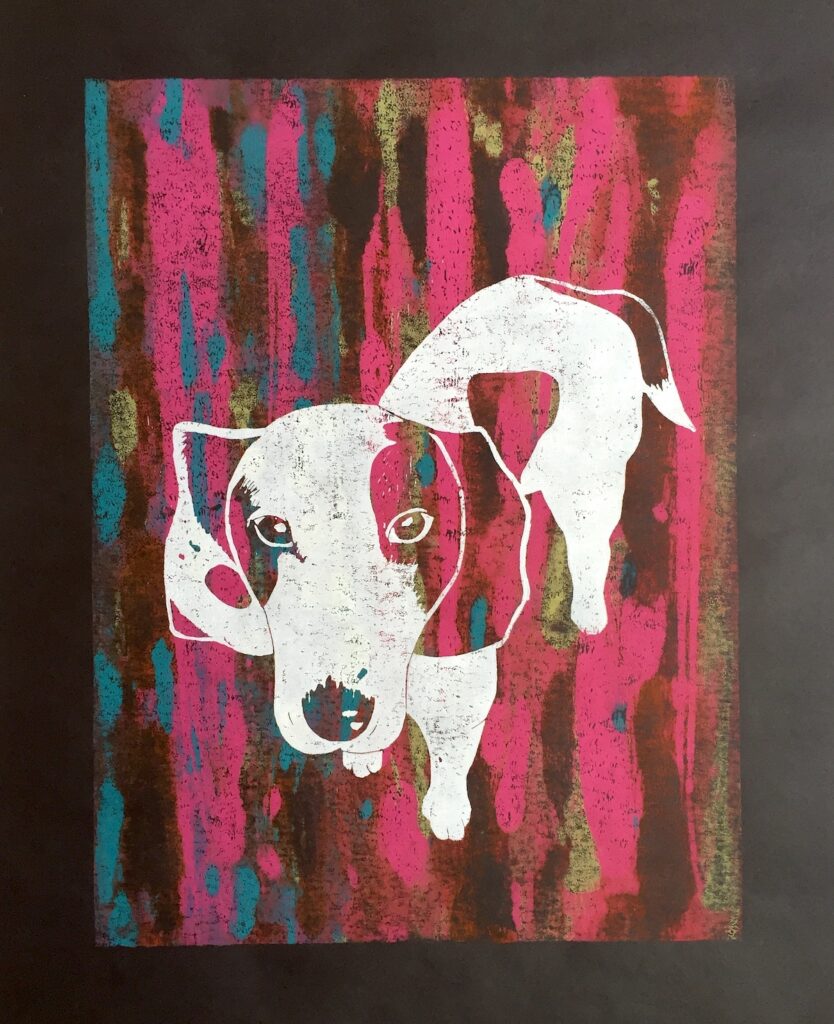
Hillary told me this course reinvigorated her love of printmaking both in her personal artmaking practice and with her students in the classroom. She said, “Studio: Printmaking through the Art of Education was hands down the best professional development I have taken in years. I have been printmaking with my students for years but was feeling I was in a rut. I had been using the same materials and the same basic lessons for a long time. Although I was a bit apprehensive to take a studio class online, I really wanted to learn about new processes and try some new techniques. Being a visual learner, I was concerned there would be a disconnect between the information presented and my understanding of how to complete the methods, but the videos posted with our classwork were fantastic.
I have bounced around working in various mediums throughout my career but have never really found my niche. I’ve always enjoyed printmaking, but I am now in love and can’t wait to continue working and put my new knowledge to use.”
4. Eraser Prints
Tommy Duncan is an elementary teacher at the Saudi Aramco Expatriate Schools Ras Tanura Elementary School in Ras Tanura, Saudi Arabia. He developed this cool lesson using erasers! Erasers are an inexpensive way for students to learn the basics of relief printing. Not only are they economical, repeating the print can also lend itself to the creation of large or small work!
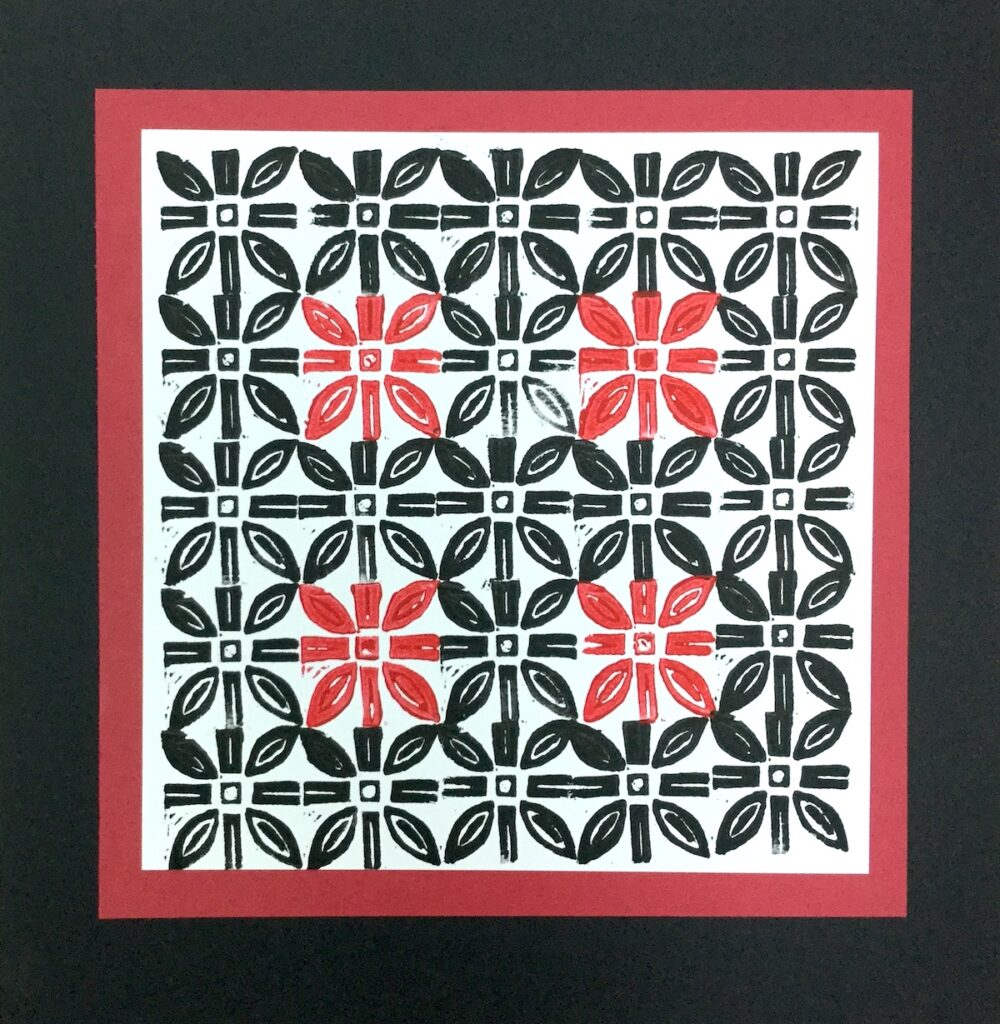
I loved Tommy’s honesty when he described his background in printmaking and what he got out of the course. He told me, “As an elementary art teacher, I am embarrassed to say I avoided printmaking like the plague! I was concerned I would not know what to do or how to teach something I knew very little about myself. The thought of the mess involved could send me into a full-blown panic attack. However, after taking this course, I am now much more confident and have a better understanding of how to help my students become successful printmakers. I am excited to begin the new school year with a plethora of ideas and, for the first time, will be incorporating printmaking into my elementary art curriculum.”
5. Collagraphs
Maura Boucher teaches K-5 visual art at the Shongum School in Randolph New Jersey. She created this beautiful mixed-media collagraph with found objects. Collagraphs are a great way to introduce students of any age to printmaking. The materials list is simple, but the results can be extraordinary! The article Teach Your Students to Make Collagraph Prints is a great place to start!
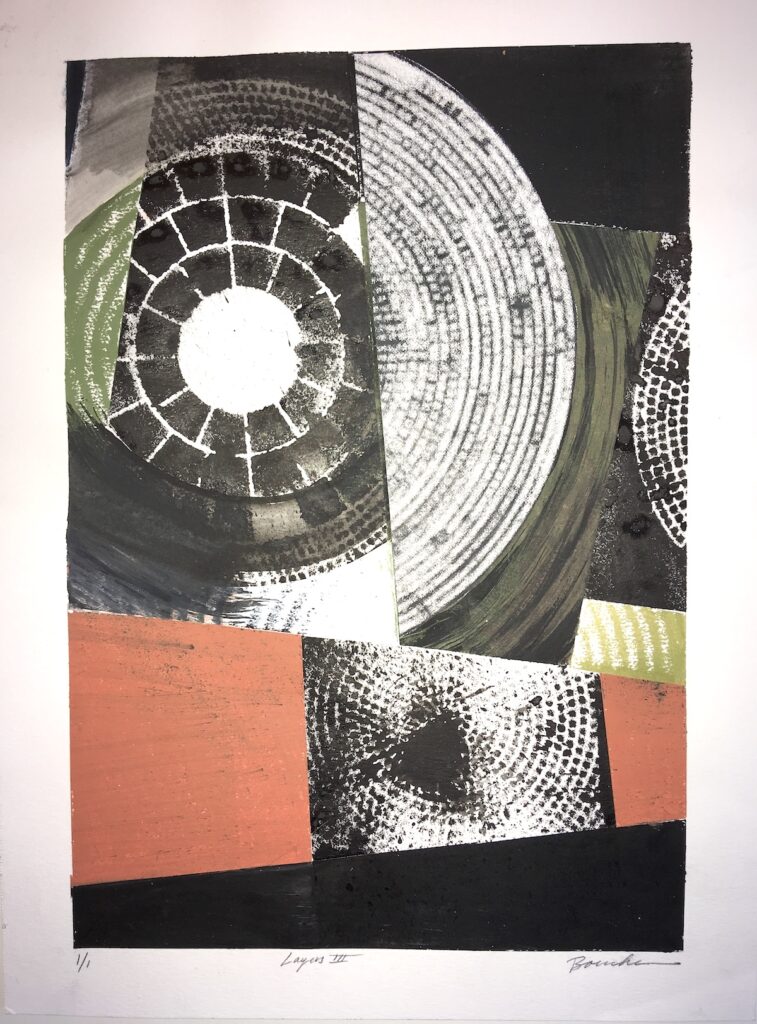
Not only is Maura an art educator, but she is also a seasoned printmaker, so I was really curious to hear what she had to say about the course.
Although Maura had incorporated printmaking techniques with her elementary students for over twenty years, she felt her projects and curriculum were stale. She was looking for new ideas and loved what she found in the course. She said, “The class explored real printmaking techniques using student-friendly materials and processes that produced fabulous results for every grade level. Using store-bought and hand-made Gelli® plates for monoprinting, acrylic paint and Mod Podge for screen printing, and packing tape for image transfers are just some of the techniques I experimented with. The techniques were not only exciting and new but also inexpensive and easy to do on a limited budget.”
6. Nature Printing
Amber Akes teaches secondary visual art at Marion High School in Marion, Illinois. She put together this amazing nature print collagraph. How fun would it be to take a walk to gather materials and do this with your students?
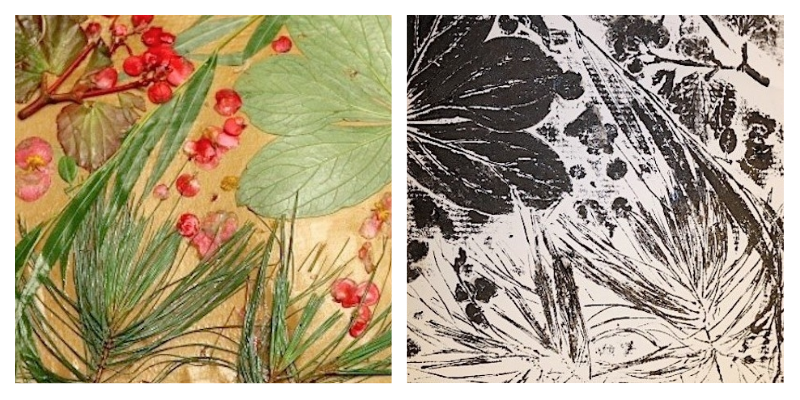
Unlike Maura, Amber had little printmaking experience before enrolling in the course. Amber grew so much and was able to say this at the end, “I knew I did not know much about printmaking when I decided to take the printmaking course with the Art of Education, and, wow, was I right! There is so much more to printmaking than I initially thought. I feel like I went from a 1 to a 10 in a matter of weeks. I enjoyed seeing what everyone brought to the class, from their backgrounds and ideas to their thoughts and critiques. Having the class discussions really helped me grow by being able to talk to peers about the process. The class gave me so many ideas on how to do printmaking on a budget. I plan on using all the techniques that I have learned when introducing a unit of study on printmaking at each level of art I teach. I can’t wait to do the nature prints with my students this fall!”
7. Trash Bag Monoprints
Craig Chapman teaches grades 6-8 in Fulton, Missouri. Below you can see an example of a trash bag monoprint he created in the course. According to Craig, “There are multiple ways to achieve this. You can also create shapes and cutouts to create a very textural positive and negative effect.”
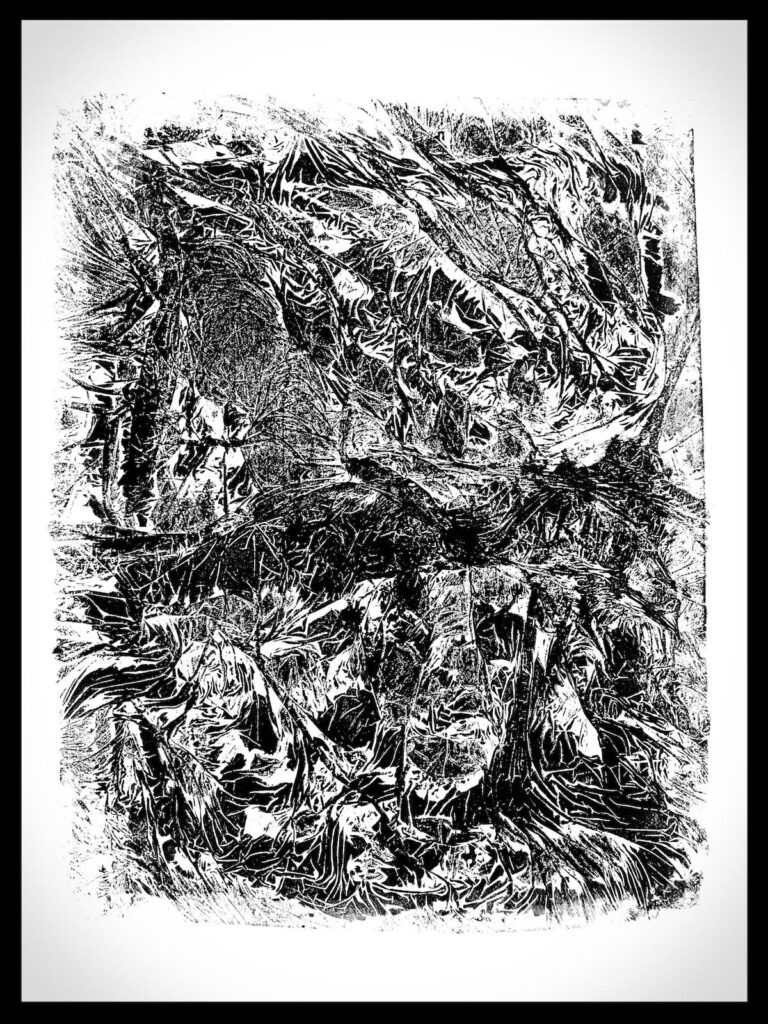
If you’re interested in seeing more, Craig also shared his process board, seen below.
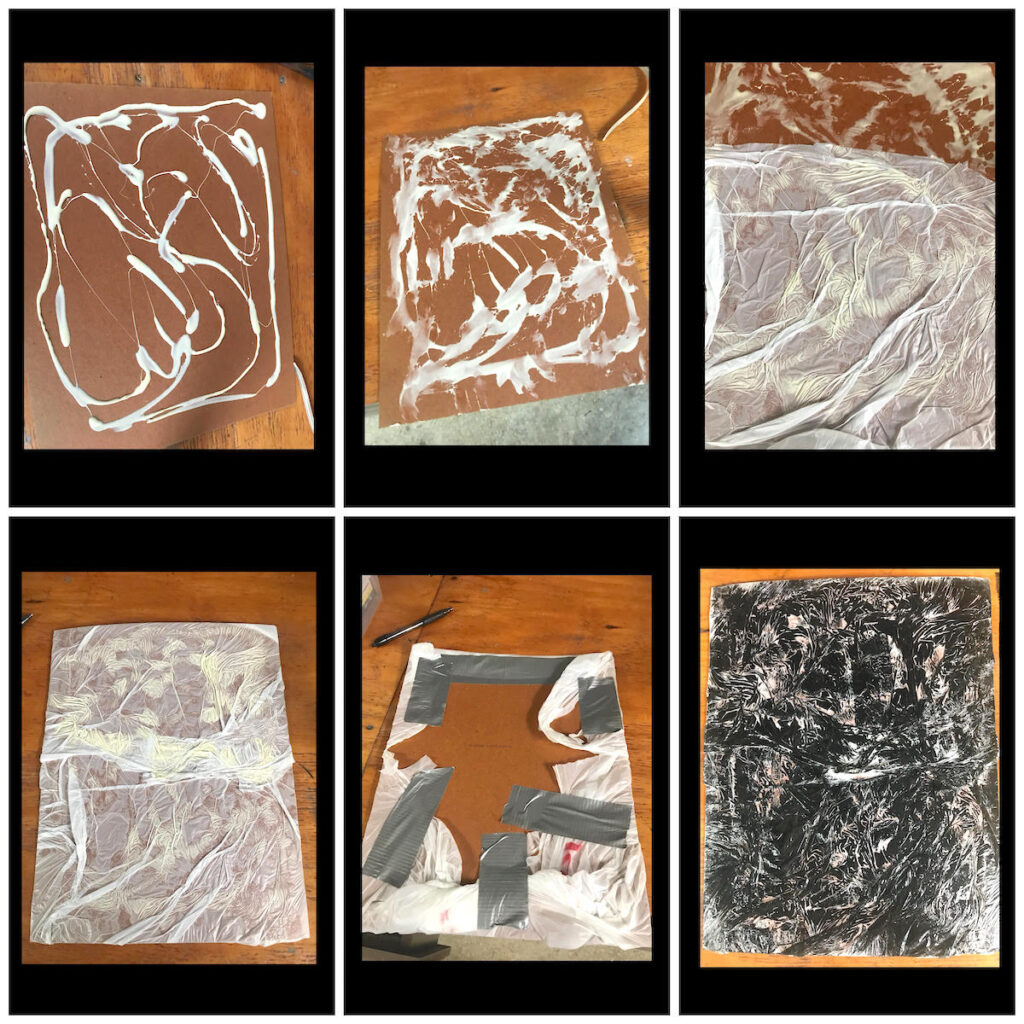
Craig had this to say about his experience, “The studio printmaking course was so different from any educational experience I have ever encountered in my life. We immediately got to know our peers in the class and built an amazing community. The resources shared by Debi, as well as my peers, seemed to get most of us thinking beyond the parameters of the course. Because of the community we built, I found myself coming back to those portions I felt myself struggling with, even after the lesson was over. I began this class with very little experience and left the class a printmaker!”
As a result of his experience, Craig plans on bringing much of what he learned in the course into his classroom. He plans on taking his usual bookmaking unit and infusing it with printmaking! He described his idea this way. “This year we are going to try creating a printmaking journal. Students will keep track of their discoveries and what works for them. At the end of the process, students will choose a method and create a larger version of a final product. They will have a neat print journal as well as hands-on experience and knowledge of how to create print plates and prints. I would have never arrived at this idea, if not for this course.”
8. Multi-Technique Print
Elizabeth Dennings is a K-12 choice-based art educator at Seneca East Local School in Attica, Ohio. To create the print you see below, Elizabeth combined multiple techniques. The list includes tabletop printing, fingerprinting, and rubber cement and tape masking.
Think about what printing processes you already do in your classroom. Could you have students layer and combine techniques in a new way?
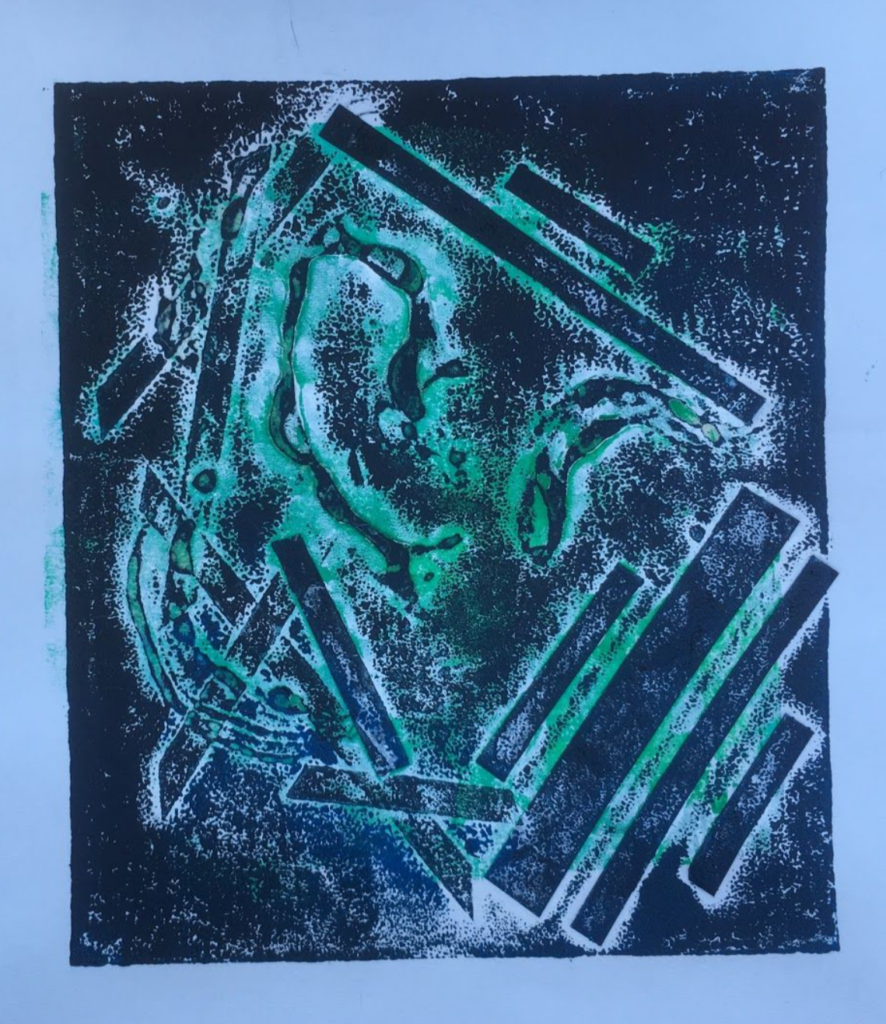
Elizabeth describes how the course helped her gain confidence and experience in printmaking so she could fully bring the choice to her students. She told me, “I run a K-12 choice-based classroom and try to provide as many options as possible for my students. Printmaking has never been my ‘thing,’ most likely due to limited experiences, but I have always recognized it as an important chunk of the art curriculum. Therefore, I felt it was my responsibility as a teacher to further my knowledge and experience in printmaking. The structure of this course, and most importantly my peers and instructor, made all of this possible. The information available in the course spanned a wide variety of printmaking topics helping me to be better prepared to expand my choice-based printmaking center. My classmates continually posed new ideas and were willing to share their experiences to help us all learn from each other.”
It was an honor to teach this course and work with these incredible educators. I have taught tabletop soap printing, collagraphs, and linocuts for years, but I have grown my printmaking ideas so much by learning from these folks. So thank you Brooke, Sue, Hillary, Tommy, Maura, Amber, Craig, and Elizabeth for sharing some of your thoughts and creative lessons with our readers!
What are your most successful printmaking lessons?
Have you considered taking the printmaking studio course with the Art of Education?
Magazine articles and podcasts are opinions of professional education contributors and do not necessarily represent the position of the Art of Education University (AOEU) or its academic offerings. Contributors use terms in the way they are most often talked about in the scope of their educational experiences.

